Related Research Articles

Ariane 5 is a retired European heavy-lift space launch vehicle developed and operated by Arianespace for the European Space Agency (ESA). It was launched from the Centre Spatial Guyanais (CSG) in French Guiana. It was used to deliver payloads into geostationary transfer orbit (GTO), low Earth orbit (LEO) or further into space. The launch vehicle had a streak of 82 consecutive successful launches between 9 April 2003 and 12 December 2017. Since 2014, Ariane 6, a direct successor system, is in development.

Arianespace SA is a French company founded in 1980 as the world's first commercial launch service provider. It undertakes the operation and marketing of the Ariane programme. The company offers a number of different launch vehicles: the heavy-lift Ariane 6 for dual launches to geostationary transfer orbit, and the solid-fueled Vega series for lighter payloads.

The Guiana Space Centre, also called Europe's Spaceport, is a European spaceport to the northwest of Kourou in French Guiana, a region of France in South America. Kourou is located approximately 310 mi (500 km) north of the equator at a latitude of 5°. In operation since 1968, it is a suitable location for a spaceport because of its equatorial location and open sea to the east.

Vega is an expendable launch system in use by Arianespace jointly developed by the Italian Space Agency (ASI) and the European Space Agency (ESA). Development began in 1998 and the first launch took place from the Guiana Space Centre on 13 February 2012.
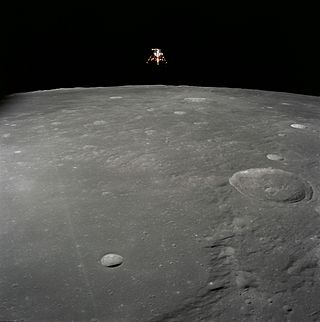
The physical exploration of the Moon began when Luna 2, a space probe launched by the Soviet Union, made an impact on the surface of the Moon on September 14, 1959. Prior to that the only available means of exploration had been observation from Earth. The invention of the optical telescope brought about the first leap in the quality of lunar observations. Galileo Galilei is generally credited as the first person to use a telescope for astronomical purposes; having made his own telescope in 1609, the mountains and craters on the lunar surface were among his first observations using it.

The Chinese Lunar Exploration Program, also known as the Chang'e Project after the Chinese Moon goddess Chang'e, is an ongoing series of robotic Moon missions by the China National Space Administration (CNSA). The program encompasses lunar orbiters, landers, rovers and sample return spacecraft, launched using the Long March series of rockets. A human lunar landing component may have been added to the program, after China publicly announced crewed lunar landing plans by the year 2030 during a conference in July 2023.

Chang'e 2 is a Chinese uncrewed lunar probe that was launched on 1 October 2010. It was a follow-up to the Chang'e 1 lunar probe, which was launched in 2007. Chang'e 2 was part of the first phase of the Chinese Lunar Exploration Program, and conducted research from a 100-km-high lunar orbit in preparation for the December 2013 soft landing by the Chang'e 3 lander and rover. Chang'e 2 was similar in design to Chang'e 1, although it featured some technical improvements, including a more advanced onboard camera. Like its predecessor, the probe was named after Chang'e, an ancient Chinese moon goddess.
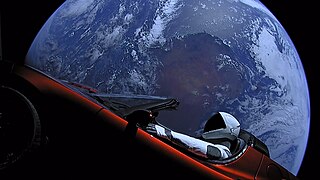
This article documents notable spaceflight events during the year 2018. For the first time since 1990, more than 100 orbital launches were performed globally.
SEOSat-Ingenio, was a Spanish project to produce a satellite capable of providing wide-field imagery ensuring a repeat cycle of 38 days at 2.5 metre panchromatic resolution and 10 metre colour resolution, from a Sun-synchronous polar orbit; it was Spain's first optical imaging satellite. The satellite was part of the Spanish Earth Observation Satellite program. The mission was funded by Spain's Centre for the Development of Industrial Technology (CDTI). SEOSat-Ingenio information was to be used by various Spanish civil, institutional or government users. However, under the Copernicus Programme of the European Union, it was also accessible to other European users, as well as to the Group on Earth observation of the Global Observing System of Earth.
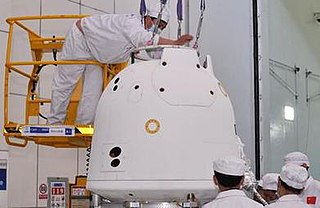
Chang'e 5-T1 was an experimental robotic spacecraft that was launched to the Moon on 23 October 2014, by the China National Space Administration (CNSA) to conduct atmospheric re-entry tests on the capsule design planned to be used in the Chang'e 5 mission. As part of the Chinese Lunar Exploration Program, Chang'e 5, launched in 2020, was a Moon sample return mission. Like its predecessors, the spacecraft is named after the Chinese Moon goddess Chang'e. The craft consisted of a return vehicle capsule and a service module orbiter.
Manfred Memorial Moon Mission (4M) was the first private lunar probe to successfully fly by the Moon. It was led by LuxSpace, a child company of German OHB System, and named in honor of OHB Systems founder, Manfred Fuchs, who died in 2014. It was launched with the Chinese Chang'e 5-T1 test spacecraft on 23 October 2014. The lunar flyby took place on 28 October 2014, after which the spacecraft entered elliptical Earth orbit and continued transmission until 11 November 2014, exceeding its designed lifetime by four times.

The following is a timeline of important events in the history of private spaceflight, including important technical as well as legislative and political advances. Though the industry has its origins in the early 1960s, soon after the beginning of the Space Age, private companies did not begin conducting launches into space until the 1980s, and it was not until the 21st century that multiple companies began privately developing and operating launch vehicles and spacecraft in earnest.

The year 2022 witnessed the number of launches of SpaceX's Falcon rocket family surpassing the CNSA's Long March rocket family, making the United States the country with the highest number of launches in 2022 instead of China. This year also featured the first successful launch of Long March 6A, Nuri, Angara 1.2, Vega-C, Kinetica-1, and Jielong-3. National space agencies' activities in this year is also marred by the Russian invasion of Ukraine, leading to tension between Roscosmos and Western space agencies, threats of ending collaboration on the International Space Station (ISS), and delays on space missions.
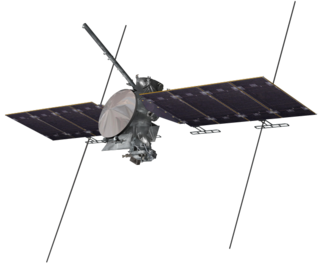
The year 2024 is expected to exceed 2023's 223 orbital launches. So far, the year saw the successful first launch of Vulcan Centaur, Gravity-1, and notably the third developmental launch of SpaceX's Starship – IFT-3. Following the 2020s' trend, it is expected to that many more privately-developed launch vehicles will feature a maiden launch in 2024.

ISISPACE (Innovative Solutions In Space) is a Dutch NewSpace company based in Delft dedicated to the design, manufacture and operation of CubeSats.
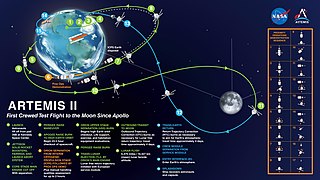
This article documents expected notable spaceflight events during the year 2025.

Vega flight VV16, also called SSMS PoC Flight, was the 16th launch of the Vega rocket. The launch was also notable as it was the first Vega launch following the accident of the VV15 launch in July 2019 that caused the loss of FalconEye1 satellite.
Phi-Sat-1 is a CubeSat mission from the European Space Agency (ESA) that uses Artificial Intelligence (AI) for Earth observation. The mission will collect a large number images from space in the visible, near-infrared and thermal-infrared parts of the electromagnetic spectrum, and then filter out the images which are covered with clouds using AI algorithms. This reduces the number of images to be downlinked from space and therefore improve efficiency. The Phi-Sat-1 mission has two main objectives:

Queqiao relay satellite (Chinese: 鹊桥号中继卫星; pinyin: Quèqiáo hào zhōngjì wèixīng; lit. 'Magpie Bridge relay satellite'), is the first of the pair of communications relay and radio astronomy satellites for the Chinese Lunar Exploration Program. The China National Space Administration (CNSA) launched the Queqiao relay satellite on 20 May 2018 to a halo orbit around the Earth–Moon L2 Lagrangian point Queqiao is the first ever communication relay and radio astronomy satellite at this location.
References
- ↑ (31 January 2005). "OHB-SES Venture Targets Space, Defense Markets", Space News16 (4): 13.
- ↑ "Rubin 9".
- ↑ Ford, Dominic. "RUBIN 9.1 & RUBIN 9.2 - In-The-Sky.org". in-the-sky.org. Retrieved 2019-05-01.
- ↑ Lakshmana, LK (12 October 2011). "India joins space big league Archived 2012-01-21 at the Wayback Machine ", Hindustan Times . Retrieved 26 January 2012.
- ↑ "First Private Moon Mission to Launch on Chinese Rocket Today". 23 October 2014.
- ↑ "Small Spacecraft Mission Service (SSMS) POC Mission (Vega) - RocketLaunch.Live".
- ↑ "Maritime microsatellite ESAIL to test the waters as launch contract is signed".
- ↑ "Arianespace to launch the ESAIL satellite for exactEarth on Vega's SSMS POC flight".
- ↑ "OHB LuxSpace and ESA sign contract for the development and qualification of the Triton-X microsatellite platform". ohb.de. 26 May 2021. Retrieved 2 May 2023.
- ↑ "LUXEOps signs agreement with Luxembourg Directorate of Defence for LUXEOSys ground segment". rheagroup.com. 26 October 2021. Retrieved 2 May 2023.